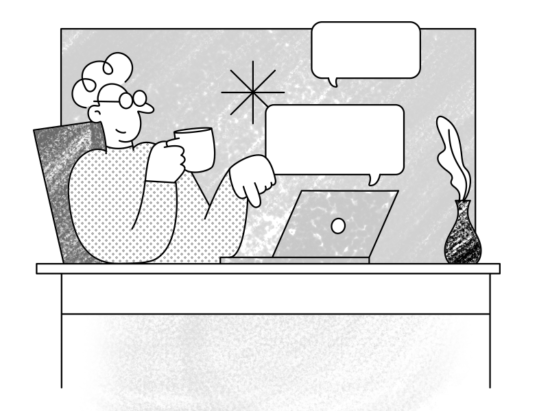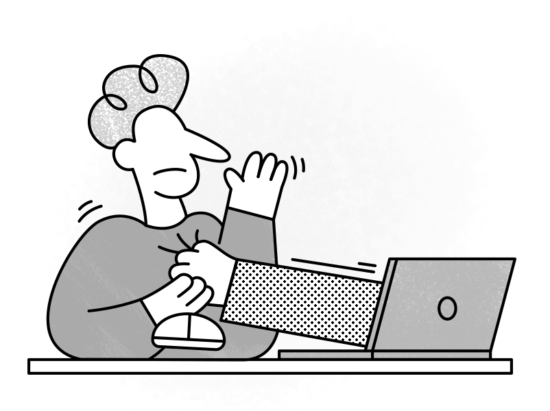When it comes to restaurant website design, the first rule you need to remember is that it needs to be as yummy and mouth-watering as all your recipes are.
Think about it for a minute.
If you are a professional chef and are running a Michelin star-worthy restaurant/diner, you know that customers eat with their eyes first. So, just like all your servings must be aesthetically and visually pleasing before they get out of the kitchen, your restaurant website design also needs to make customers’ stomachs growl to make them wish to come to your restaurant.
But, as we mentioned in the beginning, making a clean, hypnotizing restaurant website design is just the first rule, the first step.
The second step you need to think about is how your restaurant differentiates from all the others. You are aware of the fact that you are not the only talented chef out there. There are thousands of restaurants just in your city, and you need to find that one thing that makes you stand out.
So, to help you create a restaurant website whose aroma will find a way to your future customers, we have prepared a list of the following 10 tips.
Let’s go through all of them.
Tip 1: Define who your target audience is
If you have read our post on seven questions you should answer before making a website, then you might remember that one of those questions was about defining competitors and target audience. In that text, we mentioned that you should try to find your potential customers’ pain points, and find a way to save them from the “trouble” (in this case, their empty stomachs).
When contemplating about your target audience, try to find answers to the following questions:
- How do your potential customers feel when they are googling the problem? Are they anxious, nervous, happy or just hungry?
- What do they expect to find when their google your type of restaurant?
- How are you going to solve their discomfort the quickest?
Once you answer these three questions, you will have some basic idea of how your restaurant website design should look.
Tip 2: Remember that customers view your specialties on multiple devices
When you think about the fact that around 60% of internet access is done through the phone, you definitely want to consider making a mobile-friendly website. If we add to this number the fact that 94% of people judge the website design and stated the design as the reason why they mistrusted a brand, you’ll get the picture why it essential you create a responsive restaurant website.
Bonus tip: If you are not sure what the difference is between a mobile-friendly and responsive design, be sure to check our post on how you can find the right WordPress theme for your website.
Tip 3: Decide on a color scheme
If you have been checking out your competition, you have seen that the most commonly used colors are black, white, green and brown, in some cases red and yellow.
Our recommendation? Well, if you want to emphasize the elegance and sophistication of your restaurant, our advice is to include black. Black color will make all your colorful meals and rich and creamy desserts pop.
Tip 4: Don’t Use stock images
The whole point of creating a restaurant website is to show the experience YOUR restaurant has to offer to its customers. Therefore, using stock images would be a bit pointless.
But, before you jump to take photos with your iPhone, stop for a minute and think about hiring a professional (food) photographer. Why? Because, believe it or not, images can say so much about your food, staff, food price range, and your overall style. You need some high-quality pictures that will tell a story about your restaurant.
Bonus tip: Avoid including too many HD images on the website, as they can slow down your site. Also, if the outside of your restaurant doesn’t look that appealing, be sure to include photos of the interior. If you have a quirky, friendly staff in the kitchen that likes to have a good time while cooking, be sure to tell the photographer to take photos of the team, as well.
Tip 5: Consider adding a video to the homepage
As we mentioned before, people eat with their eyes first. They like to see the juiciness of a medium-rare steak and how melted chocolate drips on a creamy dessert.
The good news is that you can give them exactly what they need by including a high-quality and high-resolution video of how you prepare dishes on your website’s homepage.
If you need a bit of inspiration, you can check the Voellerei’s restaurant website design.
Tip 6: Avoid PDF menus
For the love of God, please say no to the menus that are PDF files! This type of menus is so outdated and not the best practice. Here’s why.
First off, you need to be aware of the fact that people nowadays don’t search for restaurants in the comfort of their home. They search for it while walking down the street, while talking with a friend in a coffee shop, driving in public transport, etc. But, even if the PDF file is just a couple of megabytes large, users can experience trouble viewing the file on their smartphones and downloading it.
Secondly, PDF files are hard to update. Imagine the following scenario: you want to add three new dishes to your menu. To do so, you have to add them to a PDF file, that is, to make a new version of the menu, probably using Adobe Photoshop or some other designer tool. Next, you need to take down the old menu and put the new one up. This all sounds like too much work over adding just three new specialties to your menu.
Lastly, if your menu is an image or a document, it will not be indexed properly by the search engines, which will negatively affect your search engine rank.
So, instead of going through the trouble of making a PDF file, create a Menu page that instantly displays all the dishes you have to offer.
Tip 7: Show that there are real people behind the kitchen doors
Say no to the boring About Us page and focus on the Our Team or Our Story page, instead.
Our Team page is the one page that can differentiate your restaurant from all the others. Sure, thousands of restaurants serve the same cuisine yours does, but those restaurants don’t have your staff and expertise, dedication and personality.
When creating Our Team page content, be sure to start with the intriguing headline which will give a glimpse into what your restaurant has to offer. Below the headline, you can include information about where your food comes from, how it is prepared, what inspired you to make the menu, etc. Naturally, don’t forget to mention that staff and yourself, as the head chef.
Tip 8: Clearly display the phone number, location and working hours
This is one of the most obvious tips. If your goal is to increase the number of phone calls, then you must make the phone number visible to your website visitors. Our advice is to include working hours and your location, next to the phone number.
Tip 9: Include social media links
It goes without saying that, in this day and age, your restaurant needs to be present on social media. By doing this step, you will slowly, but surely, build a fanbase.
So, on what social media channels should you post? Well, that depends on your target audience. For example, if you are running a restaurant whose regular customers are over 50 years old, you probably don’t need to create a Snapchat account. On the contrary, if you are running a modern, vegan restaurant, perfect for millennials, you don’t skip on posting on Instagram. #foodie #foodporn
If you are new to the social media world, check out the Social Sprout’s article on social media demographics to see which channels you should pay attention to the most.
Bonus tip: Don’t forget to make accounts on TripAdvisor, Yelp and Google My Business. Google My Business is one of the essential factors for local SEO.
Tip 10: Include online reservations
Every modern restaurant nowadays allows users to make a reservation.
Luckily for you, to allow users to make reservations on a WordPress website, all you need to do is install a plugin. It’s a piece of cake! Our recommendation is to use the Restaurant Reservations plugin (which we included in our Aperitive theme). This plugin will allow you to confirm or reject bookings, it will notify a customer by email when their request is confirmed or rejected and send customers an email about their booking from the Admin panel. This plugin is so intuitive to use.
Conclusion
Making a restaurant website does not seem so difficult now, does it?
We are positive that, if you follow these 10 tips, you are going to create a yummy design that will turn website visitors into returning customers.
Is there any tip you would like to add to the list? What tricks did you use to create your restaurant website?



